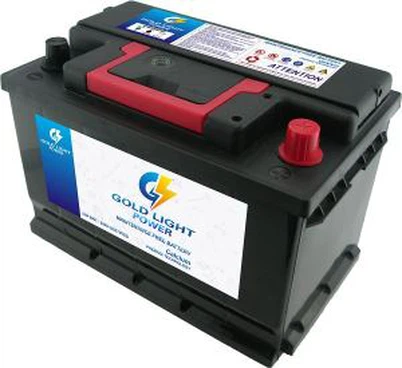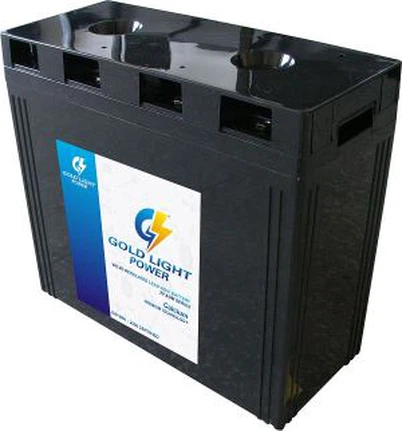How does the self - heating of a batterie agm affect its safety and performance?
Leave a message
Hey there! As a supplier of AGM batteries, I've seen firsthand how self - heating can have a huge impact on both the safety and performance of these batteries. AGM, or Absorbent Glass Mat, batteries are widely used in various applications, from automotive to renewable energy systems, because of their sealed design, maintenance - free nature, and reliable performance. But that self - heating thing? It's a real game - changer.
Let's start with how self - heating occurs in AGM batteries. When an AGM battery is charging or discharging, a chemical reaction takes place inside. During this process, electrical energy is converted into chemical energy (while charging) or vice versa (while discharging). However, not all of the energy is converted efficiently. Some of it is lost as heat. This heat generation can be exacerbated by factors like high charging currents, high ambient temperatures, or a battery that's been used for a long time and has internal resistance.
Now, let's talk about how self - heating affects the performance of AGM batteries. One of the most noticeable impacts is on the battery's capacity. You see, as the battery heats up, the chemical reactions inside speed up. At first glance, this might seem like a good thing, as it could potentially lead to more power output. But in reality, it causes the battery to age faster. The increased temperature accelerates the degradation of the battery's electrodes and the electrolyte. Over time, this reduces the battery's ability to store and deliver energy, meaning you'll get less runtime from your battery.
For example, if you're using an AGM battery in a solar power system, a self - heating battery might not be able to store as much energy from the solar panels during the day. This can lead to power shortages at night when you rely on the stored energy. And if you're using it in a vehicle, you might notice that your battery doesn't last as long between charges, or it has trouble starting the engine on cold mornings.
Another performance - related issue is the battery's internal resistance. As the battery heats up, its internal resistance increases. This means that more energy is wasted as heat during charging and discharging. It's like having a leaky pipe in your water system; you're losing energy that could otherwise be used effectively. Higher internal resistance also means that the battery can't deliver power as quickly, which can be a problem in applications where a sudden burst of power is needed, like starting a motor.
Now, onto the safety aspect. Self - heating in AGM batteries can pose some serious risks. One of the biggest concerns is thermal runaway. Thermal runaway is a vicious cycle where the heat generated by the battery causes the chemical reactions to speed up even more, which in turn generates more heat. If left unchecked, this can lead to a rapid increase in temperature, which can cause the battery to overheat, swell, and even explode.
Imagine you're using an AGM battery in a confined space, like a battery box in a boat. If thermal runaway occurs, the high temperatures and potential explosion can cause significant damage to the boat and put the lives of the people on board at risk. Even if an explosion doesn't occur, the overheating can release harmful gases, such as hydrogen and oxygen, which are flammable and can be dangerous if inhaled.
High temperatures can also damage the battery's casing. AGM batteries are designed to be sealed, but excessive heat can cause the casing to warp or crack. This can lead to electrolyte leakage, which is not only messy but also dangerous. The electrolyte in AGM batteries is usually a sulfuric acid solution, which can cause burns and damage to equipment if it comes into contact with them.
So, what can we do to mitigate the effects of self - heating? Well, proper charging is key. Using a charger that's specifically designed for AGM batteries and has temperature compensation features can help. These chargers adjust the charging current based on the battery's temperature, ensuring that the battery doesn't overheat during charging.
Another important factor is the installation environment. Make sure the battery is installed in a well - ventilated area. This allows the heat to dissipate more easily, reducing the risk of overheating. You can also use heat sinks or cooling fans in high - demand applications to keep the battery temperature in check.
Regular maintenance is also crucial. Checking the battery's temperature, voltage, and electrolyte levels (if possible) can help you detect early signs of self - heating and take appropriate action.
As a supplier, I understand the importance of providing high - quality AGM batteries that can withstand self - heating. That's why we offer a range of products that are designed with these issues in mind. For instance, we have the 2V300AH OPzV Battery Deep Cycle Solar Power Battery Valve Regulated Lead Aicd Battery 20 Years Life. This battery is built to last, with a long service life and excellent performance even under challenging conditions. It's a great choice for solar power systems, where self - heating can be a common issue.
We also offer the 2V200AH OPzV Battery, GEL Tubular Plate Battery UPS EPS 5years Warranty. This battery is ideal for UPS and EPS systems, where reliability is of the essence. Its gel tubular plate design helps to reduce the impact of self - heating, ensuring stable performance over time.


If you're in the market for AGM batteries and want to learn more about how to deal with self - heating or which battery is right for your application, don't hesitate to reach out. We're here to help you make the best choice for your energy needs. Whether you're a small - scale solar power user or a large - scale industrial client, we have the expertise and the products to meet your requirements.
In conclusion, self - heating in AGM batteries is a serious issue that can have a significant impact on both safety and performance. But with the right knowledge, products, and maintenance, you can minimize these risks and get the most out of your batteries. So, if you're looking for reliable AGM batteries, give us a shout. We'll work with you to find the perfect solution for your project.
References
- Linden, D., & Reddy, T. B. (2002). Handbook of Batteries. McGraw - Hill.
- Berndt, D. (2006). Valve - Regulated Lead - Acid Batteries. John Wiley & Sons.





